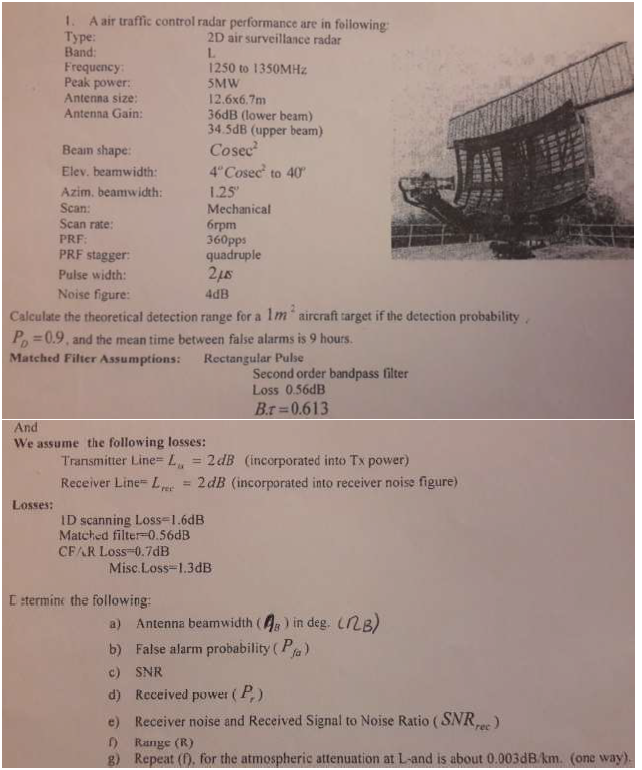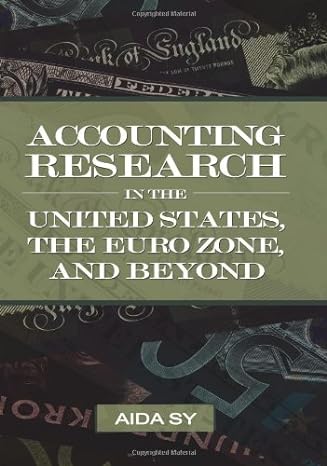
1. A air traffic control radar performance are in following Type: 2D air surveillance radar Band: L Frequency 1250 to 1350MHz Peak power: 5MW Antenna size 12.6x6.7m Antenna Gain: 36dB (lower beam) 34.5dB (upper beam) Beam shape: Cosec? Elev. beamwidth: 4Cosec to 40 Azim. beamwidth: 1.25 Scan: Mechanical Scan rate: 6rpm PRF 360pps PRF stagger quadruple Pulse width: 2us Noise figure: 4dB Calculate the theoretical detection range for a Im aircraft target if the detection probability Po =0.9, and the mean time between false alarms is 9 hours. Matched Filter Assumptions: Rectangular Pulse Second order bandpass filter Loss 0.56dB B.r=0.613 And We assume the following losses: Transmitter Line= L = 2dB (incorporated into Tx power) Receiver Line== 2dB (incorporated into receiver noise figure) Losses: ID scanning Loss 1.6dB Matched filter=0.56dB CFAR Loss-0.7dB Misc.Loss-1.3dB [termine the following: a) Antenna beamwidth (4) in deg. 11B) b) False alarm probability (Pa) c) SNR d) Received power (P) e) Receiver noise and Received Signal to Noise Ratio (SNR) ) Range (R) g) Repeat (. for the atmospheric attenuation at L-and is about 0.003dB.km. (one way). 1. A air traffic control radar performance are in following Type: 2D air surveillance radar Band: L Frequency 1250 to 1350MHz Peak power: 5MW Antenna size 12.6x6.7m Antenna Gain: 36dB (lower beam) 34.5dB (upper beam) Beam shape: Cosec? Elev. beamwidth: 4Cosec to 40 Azim. beamwidth: 1.25 Scan: Mechanical Scan rate: 6rpm PRF 360pps PRF stagger quadruple Pulse width: 2us Noise figure: 4dB Calculate the theoretical detection range for a Im aircraft target if the detection probability Po =0.9, and the mean time between false alarms is 9 hours. Matched Filter Assumptions: Rectangular Pulse Second order bandpass filter Loss 0.56dB B.r=0.613 And We assume the following losses: Transmitter Line= L = 2dB (incorporated into Tx power) Receiver Line== 2dB (incorporated into receiver noise figure) Losses: ID scanning Loss 1.6dB Matched filter=0.56dB CFAR Loss-0.7dB Misc.Loss-1.3dB [termine the following: a) Antenna beamwidth (4) in deg. 11B) b) False alarm probability (Pa) c) SNR d) Received power (P) e) Receiver noise and Received Signal to Noise Ratio (SNR) ) Range (R) g) Repeat (. for the atmospheric attenuation at L-and is about 0.003dB.km. (one way)







